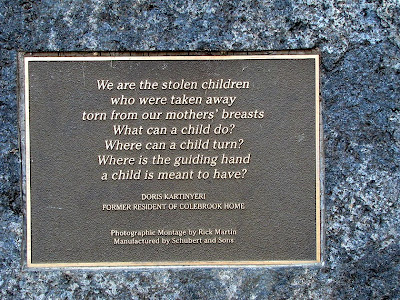Bloody Crimes: The Chase for Jefferson Davis and the
Death Pageant for Lincoln’s Corpse1 – to give my copy of James
Swanson’s 2010 book its full title – is a detailed chronicle of a momentous
period in American life, which, as the title suggests, deals with the
assassination of President Abraham Lincoln; the historic journey by train of
his remains from Washington, DC to Springfield, Illinois; and the hunt for the
Confederate President, Jefferson Davis, in the final weeks of the American
Civil War.
While the core of the book covers a period of less than four
weeks – from the death of Abraham Lincoln on April 15, 1865 until the capture
of Jefferson Davis on May 10, 1865 – there are chapters bookending this
material which provide information to place these two larger-than-life
characters in the right historical setting.
Apart from a passing mention or two, James Swanson does not
deal with the hunt for John Wilkes Booth – Lincoln’s assassin – or that of his co-conspirators
in this book. Swanson’s first book, Manhunt, covers this ground
extensively, allowing him to concentrate on the parallel, but quite different
journeys of Lincoln and Davis.
And what journey’s they are.
Following Lincoln’s murder, his body undergoes a 1,600 mile
trip by train from Washington, DC through Maryland, Philadelphia, New York,
Ohio, Indiana, and finally onto its final resting place in Lincoln’s hometown,
Springfield, Illinois. As the funeral train steams across the American landscape,
thousands of people line the route and crowd town and city ceremonies to honor
the presidents life and to mourn his passing. The closer to Springfield the
train gets, the larger the crowds and the more intense the mourning rituals.
While all this is going on, Confederate President, Jefferson
Davis is heading into the south, hoping against hope to rally his scattered
generals and war weary soldiers for the ongoing fight for secession.
Falsely accused of being a co-conspirator in Lincoln’s
assassination, Davis eventually runs out of money, support, and options, and is
captured along with his wife, children, and a small group of loyal aides, and
jailed in anticipation of a trail that never takes place. Ultimately, he is
released – neither guilty nor innocent – of crimes against the state, and lives
out the rest of his life at Beauvoir, an estate near Biloxi, Mississippi.
Following Jefferson Davis’s death in New Orleans on December
6, 1889, his own remains underwent their own pilgrimage by train from the
Crescent City through Mississippi, Georgia, South and North Carolina, and on to
Richmond, Virginia.
But none of the above, captures the intimate details and
minutiae that James Swanson fills Bloody Crimes with. Richly
illustrated, and carefully researched, Swanson’s 464 page book takes readers
inside the Peterson house to recount the minutes and hours following the
shooting at Ford’s Theatre. The boarding house, owned and operated by William
and Anna Peterson was just doors from the theatre. It was here that Lincoln,
mortally wounded from a single gunshot to the head, spent the final 12 hours or
so of his life.
Using contemporary accounts from the period (books, private
journals and letters, newspaper reports, photos, sketches, prints, archival
material, and official government records, etc), Swanson is able to paint a
picture that captures the shock, tears, anger and confusion in the immediate
aftermath of Lincoln’s death.
His coverage of Lincoln’s funeral train is equally detailed,
again using many contemporary accounts that followed its route through the
northern states of the Union. Interspersed with these descriptions, Swanson
examines the southern journey of Jefferson Davis as he abandons Richmond,
Virginia after the surrender of Robert E. Lee, and heads south by train with
what little is left of his war cabinet and treasury.
James Swanson regards Jefferson Davis, as one of the “Lost
Men” of American history, and it wouldn’t surprise me if he decided to turn his
attention to telling Davis’s story at some future date. Sadly, in the epilogue
to Bloody Crimes, Swanson writes that Beauvoir, the family home near
Biloxi was completely destroyed when Hurricane Katrina roared across the Gulf
in August 2005, sweeping away priceless artefacts, documents and other
materials kept there.
Students of American history should find Bloody Crimes fascinating.
I for one, highly recommend it.
-o0o-
Notes:
1Intriguingly, Amazon gives the title of this book as Bloody
Crimes: The Funeral of Abraham Lincoln and The Chase for Jefferson Davis
(see image).
Why the difference in titles is beyond me, although I
suspect that the ‘Death Pageant for Lincoln’s Corpse’ lines might have
something to do with it. In that case, why not settle for the same, less
offensive or controversial title across all editions and be done with it? Your
guess is as good as mine, dear reader. Your guess is as good as mine.
James Swanson seems to have carved out a niche for himself
as an expert on the assassination of President Abraham Lincoln and the events
surrounding that historic event. He has written or co-written several other
books on the topic including, Manhunt: The 12-Day Chase for Lincoln’s
Killer, and Lincoln’s Assassins: Their Trial and Execution (with
Daniel Weinberg).
This is described on Amazon as “...an adaptation for young people of his adult book
,” so be sure you are purchasing the ‘adult’ version of the book, if that is what you are looking for.
with
Edward Steers. Finally, most of these books are also available in Kindle
editions, and as audio books through Amazon.








































